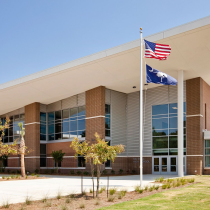Technical Assistance
Technical Assistance
The Efficient and Healthy Schools Program provides direct technical assistance to participating K-12 schools and districts on topics related to energy efficiency, health, and resilience.
What's Technical Assistance? Personalized and tailored support and resources from subject matter experts in multiple categories, relevant to either implementation or planning efforts within schools or districts.
Please fill out the join form. We'll reach out to schedule an onboarding call.
If you have any questions, please email schools@lbl.gov.

Methods:
![]()
1-1 Coaching
- Document review to provide independent assessment of project plans, or suggestion to improve planning documents such as energy goals, retrofit plans, IAQ improvement plans
- Talk through strategies to improve energy efficiency, health, and resilience
![]()
Resource Connections
- Connect schools with partnering agencies - EPA (IAQ, ENERGY STAR® Portfolio Manager®), ED (Green Ribbon Schools)
- Point schools to funding - fed (ESSER, DOE grant), state, local, utility incentives, ESCO, etc.
- Connect schools with subject matter experts
- Provide a list of relevant technical resources (e.g., tools & guides, webinars)
Process:
Step One: | Step Two: | Step Three: | Step Four: |
|---|---|---|---|
| Participate in a simple onboarding interview after signing up for the program to identify a point of contact and needs. Or, send an email directly to schools@lbl.gov | We’ll reach out to subject matter experts to get you connected on your behalf, and send you any applicable resources. | We’ll follow up with both participants and subject matter expert points of contact to ensure technical assistance is provided and beneficial. | Additional meetings as needed or requested with either the program staff of subject matter experts. |
Success Stories:
In response to the COVID-19 pandemic, a Colorado school district implemented a number of ventilation strategies to mitigate risks. They observed an increase in energy costs from $3.8 million (2019/2020 school year) to $4.2 million (2020/21, partial occupancy) and $5.6 million (2021/22, full occupancy). We entered the districtwide energy usage data and used BETTER (https://better.lbl.gov) to analyze changes in their energy use while accounting for occupancy and weather conditions. BETTER identified opportunities to improve energy efficiency through operational and equipment changes.

A district in South Carolina requested assistance with evaluating their district energy use and putting together a plan for building upgrade prioritization. We conducted a review of energy use and benchmarked several years of data using ENERGY STAR® Portfolio Manager®. With this benchmark set, we worked with them to set goals for building construction and upgrades and drafted an initial plan for internal buy-in. In addition, we suggested other steps to improve energy efficiency for the school district, including a review of building controls, sequence of operations, faults/flags, and optimization opportunities. Currently, the district is performing an analysis and undergoing a planning phase to understand staffing and other needs required for implementation.

We assisted a school district from Washington with their efforts to draft a Climate Action Plan. We met with them multiple times to discuss specific sections in their Plan, and review draft documents. Their Plan not only addresses the climate challenges and improves the health of students and staff, but also empowers students on equity, leadership, and learning. See their case study here!